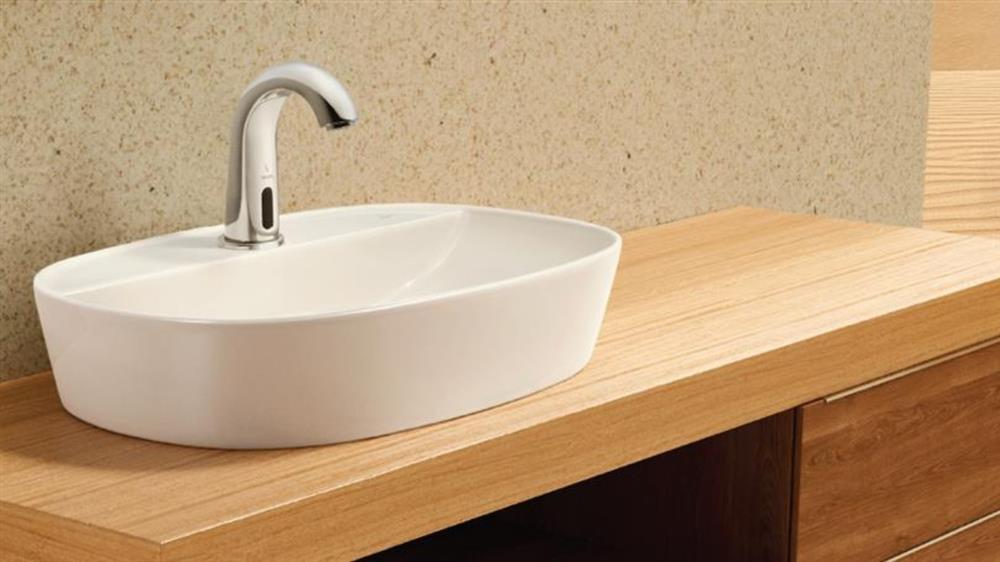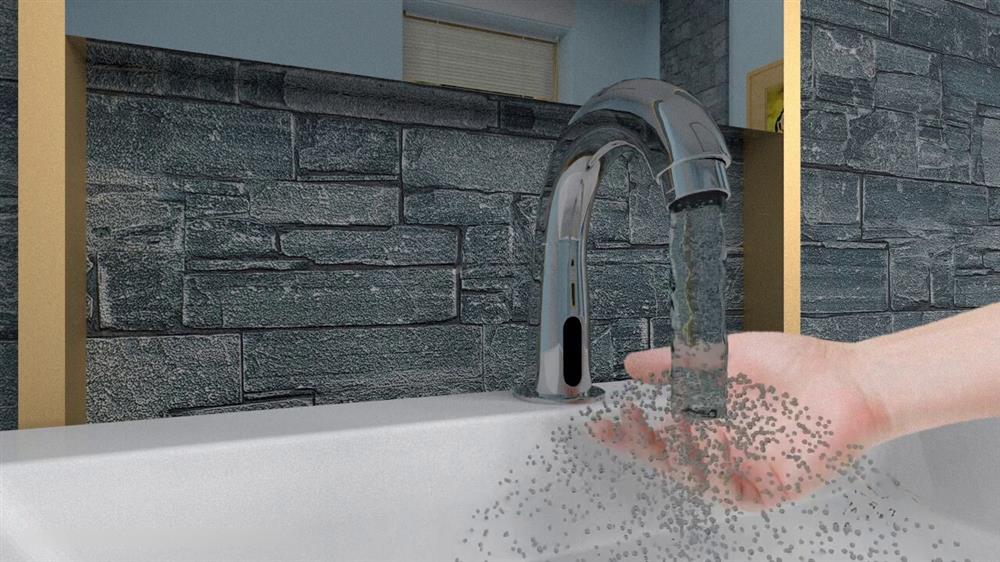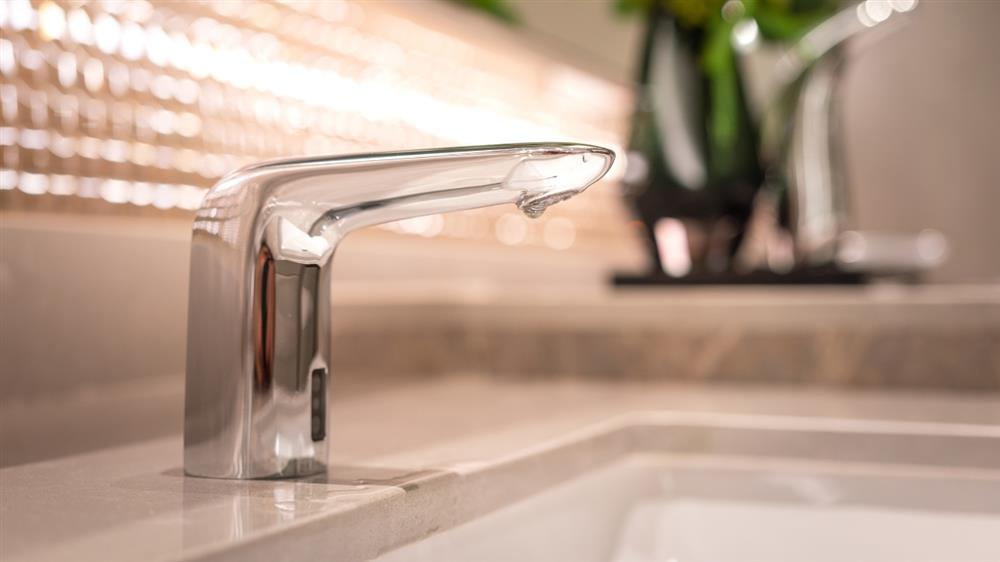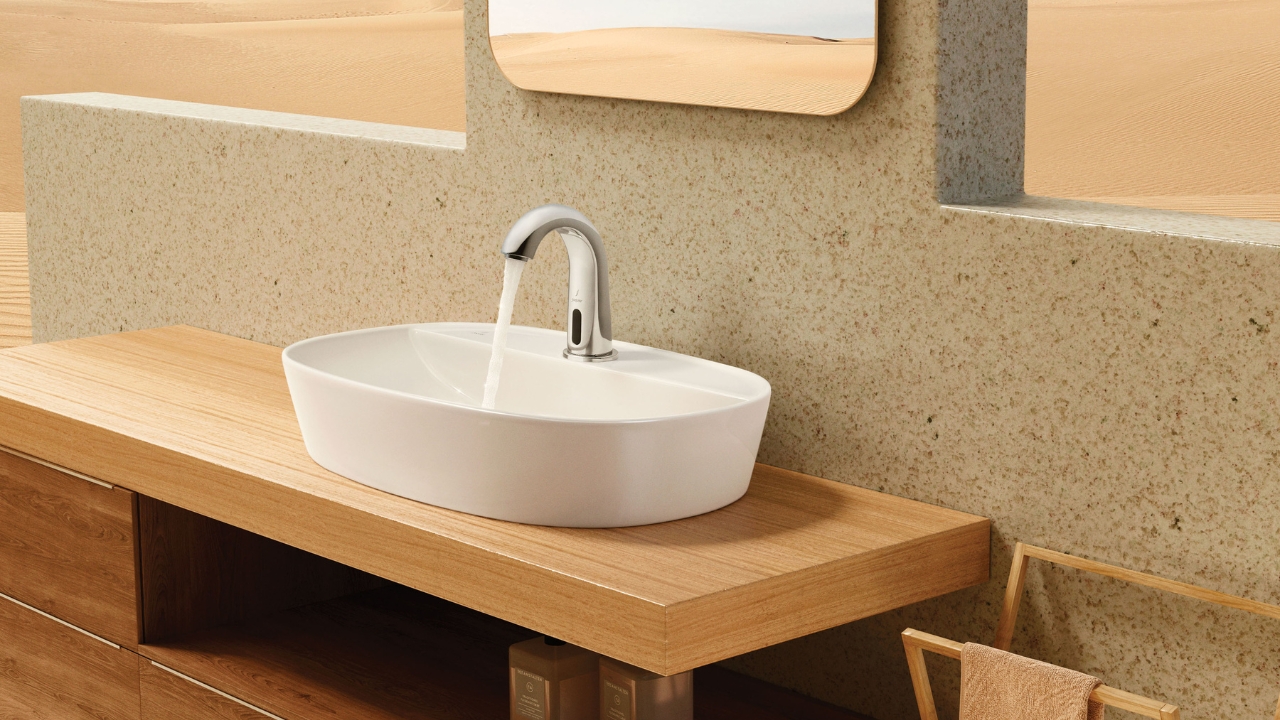As a responsible brand that cares about the environment and continuously innovates to design bathroom fittings for everyone from urban-high rises to the rural community center, we consider resource efficiency as a prime directive in our work.
And as water scarcity threatens India with taps running dry in our megacities, it is time every home and building owner embraces solutions that nurture this precarious resource - Water.
While one might dismiss a humble faucet as a trivial water guzzler compared to showers or washing machines. Yet the ubiquitous Indian tap dispenses almost 16 liters per person daily, most of it flowing down the drain unused during activities like brushing teeth, washing hands, or scrubbing vessels. Add this up for the over 1.4 billion taps nationwide and the wasted volumes are staggering!
Introducing sensor faucets.
In this article today, we are going to talk about
- What are sensor faucets?
- How do they help save water and money?
- How do they complement smart water infrastructure?
Eager to find out? Then let’s dive in.
What are Sensor Faucets?

Credits: Jaquar India, Instagram
Sensor faucets, also sometimes referred to as automatic faucets or touchless taps, are faucets that use a sensor to detect the presence of hands and automatically turn the water on and off.
They are commonly used in public restrooms and commercial kitchens, but are becoming increasingly popular for home use as well.
How do Sensor Taps help save water and money?

Credits: Canva
Sensor faucets or taps eliminate this faucet-level hemorrhage through intelligent automation. Their motion sensing technology activates water flow only when you place your hands underneath, shutting off automatically once you move them away.
By ensuring not a single drop is dispensed unnecessarily, these touchless taps conserve up to 60% more water compared to manual variants.
As sensor taps gain popularity internationally, Indian cities like Hyderabad and Bengaluru have also begun incentivizing households to install these through rebates on water taxes and discounted smart meters.
And the savings realized are certainly enticing - sensor taps allow us to cut our clients' water bills by ₹800-1200 every month, recovering their higher upfront costs within 8-10 months.
But in reality, sensor taps are about much more than just saving money.
Studies reveal each minute a leaky tap spends dripping, it wastes over 200 liters annually!
This volume would suffice for around 90 hand washes. Numbers that make one pause and consider the true value of each drop so casually lost. Sensor taps provide a constructive solution to such negligence without patrons even noticing the shift.
Key Features of Sensor Faucets
Some key water-saving features of sensor faucets include:
- Precise activation
- Adjustable water flow time
- Automatic shut-off
- Hand detection range
- Real-time monitoring
Precise activation - The infrared sensors in the water tap ensure that they activate automatically when needed and prevent false triggers that may cause unnecessary water wastage.
Adjustable water flow time - You can easily customize the duration of your water flow based on the purpose, thus, preventing unnecessary water usage.
Automatic start-up and shut-off - It ensures that water flow stops when the hands are removed eliminating water wastage during teeth-brushing, shaving and other similar tasks that taps lose a lot of water while running unchecked.
Hand detection range - Based on the basin size and space, the hand detection zone can be easily adjusted for adequate water usage.
Real-time monitoring - Smart sensor faucets can identify leaks and monitor water usage patterns. This can help further prevent water wastage.
Put together, these features reduce water usage by nearly 60% compared to traditional manual faucets. Even such savings at household levels can lead to a significant collective impact - both in terms of water usage and water bills.
Sensor faucets are a simple innovation that can easily integrate into the daily lives of people.
Another Reason for Choosing Sensor Faucets - Better Hygiene
Automated taps foster better hygiene by eliminating contact with surfaces teeming with pathogens.
With India reporting nearly 40% of food poisoning outbreaks originating from unclean hands, sensor taps are a prudent choice for kitchens. Their touchless operation also reduces contagion spread in crowded public washrooms across offices, malls and transit hubs - a benefit we came to appreciate deeply post-pandemic!
Within public restrooms, sensor faucets take on added importance by reducing contamination. Studies conducted in healthcare facilities indicate that sensor faucets result in:
- 34% lesser bacteria contamination compared to regular faucets
- 41% reduction in general bacterial load in restrooms
- 31% decrease in coliform bacteria which can cause serious infections
- 23% lower presence of E. coli bacteria responsible for food poisoning and diarrhea
Similar benefits are applicable to schools, malls, airports, train stations, and other crowded public places. The touchless operation and automatic shut-off eliminate a key route of disease transmission while washing hands.
Sensor faucets allow a larger number of people to wash hands effectively without wasting water, enhancing collective health and hygiene. Adding antimicrobial copper coatings can augment the germ-fighting properties of touchless faucets.
For public parks, gardens, and other outdoor settings, sensor faucets integrated with rainwater harvesting technology offer a sustainable solution. These faucets backed by stored rainwater provide accessible drinking water and water for handwashing, benefiting the community.
Overall, the case for deploying sensor faucets becomes even stronger for public institutions given their health, hygiene, and accessibility benefits - alongside substantial water savings.
Challenges in Adoption of Sensor Faucets
While Sensor Faucets are great, they remain pricier than standard faucets. This means households with low income or smaller businesses may not be able to afford them.
While gradual cost reduction through economies of scale may be achieved soon, it is important that Government subsidies boost its adoption too.
Apart from the high upfront costs, they are other challenges in adoption of Sensor Faucets:
- Infrastructural incompatibility
Retrofitting existing faucet set-ups with sensor technology faces infrastructural barriers in older constructions. Customizable and adaptable sensor faucet models are needed.
- Tech glitches
Sensors may malfunction due to voltage fluctuations or battery exhaustion leading to water wastage and frustrates users. Improved circuitry design and indicator alerts can address this issue.
- Lack of maintenance infrastructure
Any electronic device requires periodic maintenance, which can be a constraint in smaller towns. Expanding technical support and enabling remote troubleshooting features would widen access.
Despite these roadblocks, the promise of sustainability and immense water savings potential is likely to propel sensor faucets into the mainstream.
The Global Water Crisis Demands Action - Sensor Faucets Can Have a Big Impact

Credits: JaquarIndia, youtube
Access to safe drinking water is a basic human right yet billions of people around the world lack this basic necessity.
According to a report by the United Nations, 2.2 billion people do not have access to safely managed drinking water. This crisis disproportionately impacts marginalized communities and developing nations.
In India alone, 163 million people lack access to clean water. The situation is exacerbated by rising temperatures, erratic rainfall, and drying water bodies due to climate change. Untreated sewage, industrial effluents, and agricultural runoff further contaminate available water resources.
This growing water stress has severe repercussions for public health, food security, and socio-economic development. The water crisis, therefore, needs focused and urgent action across sectors, communities, and nations.
Adopting water-efficient solutions like sensor faucets can significantly contribute to overcoming this challenge.
The Ripple Effect of Water Conservation
Water conservation is not just about saving water alone. It sets off a ripple effect that touches many aspects of environmental sustainability and human wellbeing.
Sensor faucets contribute to this holistic impact in the following ways:
- Conserving Energy
Sensor faucets help conserve energy that would otherwise be used to manage excess water, thereby, reducing your carbon footprint too. - Cost Savings
Authorities spend vast sums of money to supply and treat wastewater. Minimizing water demand with solutions like these lowers supply costs. - Keeping Water Clean
When less water is used, less freshwater needs to be treated and transported, thus maintaining the availability of existing water resources. - Promoting Sustainability
Better water utilization helps the environment and secures water for the current and future generations. - Better Public Health
Touchless taps limit the transmission of germs and infections that may get acquired by touching bathroom and kitchen faucets.
This multilayered impact amplifies the value of simple interventions like sensor faucets in creating more livable and sustainable urban communities.
And the best part is quality sensor taps like those from Jaquar are now available integrated with aesthetically-crafted faucets and basins. So one need not compromise between form and function - sensor technology can seamlessly meld cutting style with sustainability.
Sensor Faucets Complement Smart Water Infrastructure

Credits: Canva
With interconnected technologies that allow cities to optimize every aspect of water management, sensor faucets can easily fit into the smarter water concept.
Smart water meters capture granular real-time data on usage patterns in households and large facilities. Central management systems then can analyze this data to detect spikes and anomalies that signal leaks and faults in the network. Sensors can also monitor water quality parameters across the distribution network.
These innovations can help cities reduce losses from leaks, closely track conservation initiatives and direct water resources to high-priority areas. Smart rationing and reduction in pressure can also minimize the impact on citizens during water scarcity periods.
Sensor faucets enhance such smart water infrastructure.
As Indian cities expand at breakneck speeds, balancing between development goals, water availability and quality of life will prove critical.
Universal adoption of sensor taps, while just one piece of the puzzle, can drive significant water savings while enhancing public health. On occasion, seemingly small changes aggregated across society can catalyze more habitable futures.
Jaquar Faucets: Elevating Water Efficiency and Design

Credits: Jaquar
Jaquar faucets epitomize the seamless blend of functionality and aesthetic appeal, offering an array of sensor shower taps, sanitary taps, and designer taps for washbasins, including luxurious options.
We are committed to providing sustainable solutions that are both durable and long lasting. Here are some features common in Jaquar taps and faucets:
- The cartridges in Jaquar taps, crucial for controlling water flow, undergo rigorous testing for up to half a million cycles, ensuring a trouble-free lifespan of up to 20 years. Our kitchen and bathroom faucets offer unparalleled value, with brass spindles in washbasin taps for enhanced strength, and the ability to operate smoothly under various temperature and pressure conditions.
- Reflecting the individual style of each homeowner, Jaquar faucets come in a range of colors and PVD finishes. The meticulous chrome finish applied to Jaquar taps ensures resilience to extreme climate and water conditions, minimizing wear and tear.
- We also do a stringent 450+ hour salt spray test that guarantees that each faucet, from washbasin taps to shower mixers, is not only durable but also resistant to corrosion, prolonging the aesthetic appeal and functionality of the faucets.
By choosing Jaquar, you do not just invest in a product but embrace a lifestyle of elegance, efficiency, and sustainability. We continue to contribute to the aesthetic enhancement of bathrooms and kitchens while also aligning with the global imperative of water conservation.
Wrapping up
We hope that homeowners, architects and facility managers will gradually integrate sensor taps into projects as complements to rainwater harvesting and greywater recycling systems.
With thousands of new urban housing projects that are approved every year, adopting sensor taps early on alongside other water-smart measures can compound conservation benefits over time.
And importantly, this will help relieve the strain on fragile water resources, enhancing sustainability and liveability for generations to enjoy.


